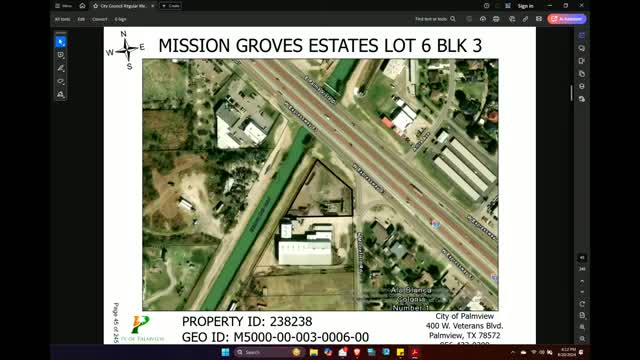City approves controversial stealth cell tower despite concerns
August 21, 2024 | Palmview, Hidalgo County, Texas
This article was created by AI summarizing key points discussed. AI makes mistakes, so for full details and context, please refer to the video of the full meeting. Please report any errors so we can fix them. Report an error »

In a recent city council meeting, discussions centered around the approval of a conditional use permit for a new cell tower proposed by Verizon. The planning and zoning board recommended that the tower be designed as a stealth structure, which would obscure its appearance, and that landscaping be implemented to buffer the view of the equipment from the road.
Doak Leggett, representing Verizon, expressed the company's agreement with the landscaping requirement but raised concerns regarding the stealth design. He indicated that while the stealth feature would enhance aesthetics, it could lead to a degraded signal quality due to the engineering demands of the structure. Leggett explained that the proposed design without stealthing would allow for better signal penetration, whereas the added screening could necessitate additional sites to maintain network coverage.
Leggett also highlighted potential issues with the tower's load capacity, noting that the design might only support two carriers instead of the intended three due to the added weight of the stealth apparatus. He emphasized that the cost of constructing the tower would likely double if the stealth requirement were enforced.
City officials clarified that while stealth designs are not standard in their ordinances, they can be included as conditions for the permit. The purpose of the stealth requirement is to minimize the visual impact of the tower, making it blend more seamlessly into the environment, such as resembling a palm tree or incorporating local branding.
The council is expected to weigh the aesthetic benefits against the potential technical drawbacks and costs as they move forward with the permit decision.
Doak Leggett, representing Verizon, expressed the company's agreement with the landscaping requirement but raised concerns regarding the stealth design. He indicated that while the stealth feature would enhance aesthetics, it could lead to a degraded signal quality due to the engineering demands of the structure. Leggett explained that the proposed design without stealthing would allow for better signal penetration, whereas the added screening could necessitate additional sites to maintain network coverage.
Leggett also highlighted potential issues with the tower's load capacity, noting that the design might only support two carriers instead of the intended three due to the added weight of the stealth apparatus. He emphasized that the cost of constructing the tower would likely double if the stealth requirement were enforced.
City officials clarified that while stealth designs are not standard in their ordinances, they can be included as conditions for the permit. The purpose of the stealth requirement is to minimize the visual impact of the tower, making it blend more seamlessly into the environment, such as resembling a palm tree or incorporating local branding.
The council is expected to weigh the aesthetic benefits against the potential technical drawbacks and costs as they move forward with the permit decision.
View full meeting
This article is based on a recent meeting—watch the full video and explore the complete transcript for deeper insights into the discussion.
View full meeting
